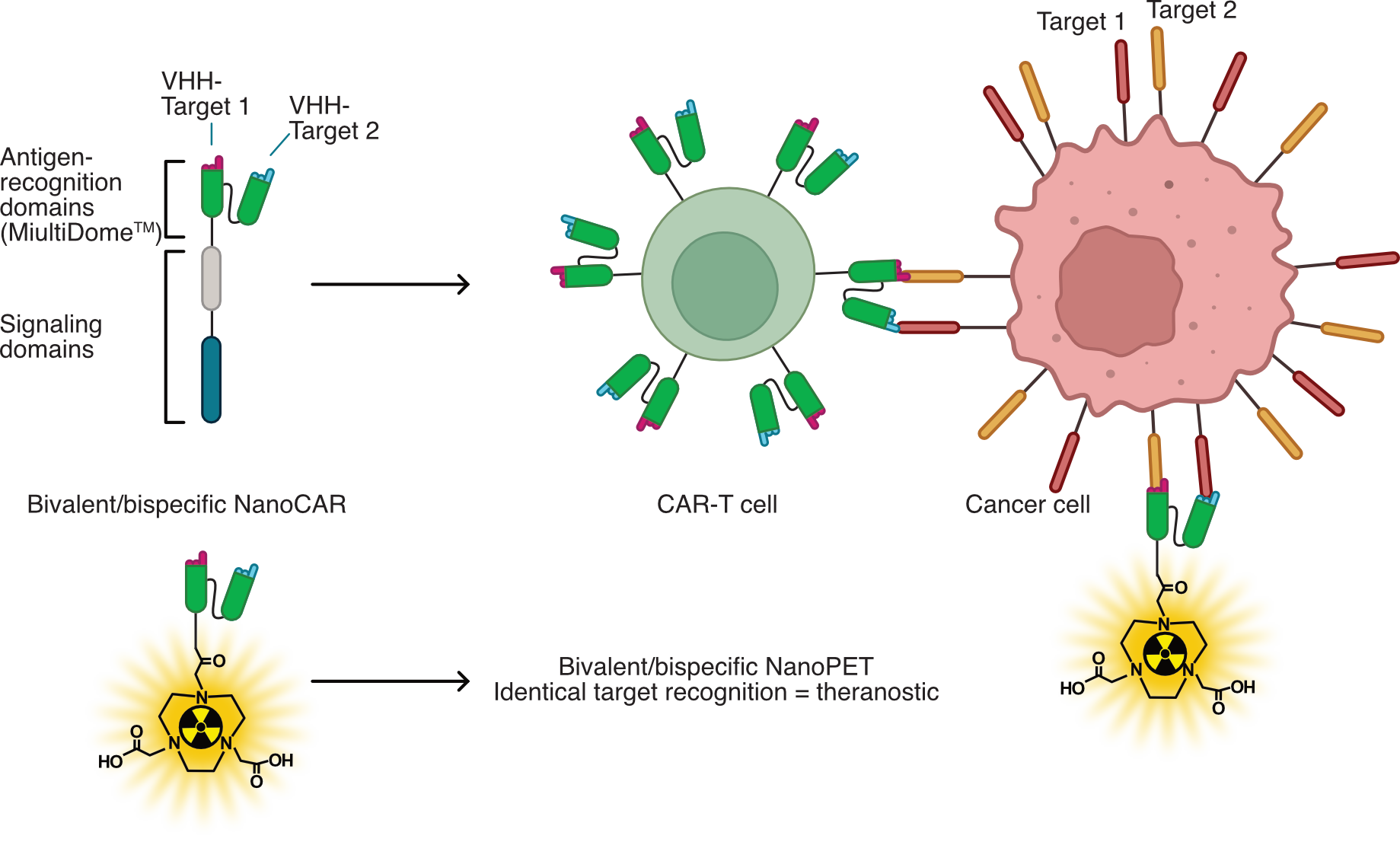CarVexTM Platform
CARVex™ – Optimized VHH constructs for next-generation CAR T therapies
What is CARVex™
The CARVex™ platform leverages the unique properties of VHH antibodies to design optimized constructs for Chimeric Antigen Receptor (CAR) T cells. Unlike conventional scFvs, VHH antibodies lack the hydrophobic interface between heavy and light chains, making them more stable, easier to express, and less prone to aggregation.
Key Features
- Optimized CAR designs
VHH antibody-based CARs are engineered for high expression, folding stability, and efficient target recognition. - Controlled tonic signaling (PCP optimization)
Constructs are fine-tuned for their physicochemical properties (PCP value) to minimize excessive tonic signaling. This reduces the risk of premature T-cell exhaustion and supports long-term therapeutic activity. - Superior biophysical properties
VHHs are compact, soluble, and highly stable, reducing issues often observed with scFv-based CARs. - Flexible targeting strategies
- Monospecific NanoCARs: single VHH targeting one antigen.
- Bispecific or tandem NanoCARs: multiple VHHs in one construct, enabling simultaneous recognition of different epitopes or antigens.

Figure: Example of CARVex™ constructs containing two VHH domains, optimized for physicochemical balance (PCP value) to ensure controlled tonic signaling in CAR T cells. The same VHH construct can be extended to a PET imaging diagnostic by introducing a chelator and an appropriate radionuclide, such as 89Zr, while both VHH domains remain directed against tumor-associated targets, thereby combining therapeutic efficacy with non-invasive imaging in a true theranostic approach.
Advantages Over scFv-based CARs
-
Lack of a hydrophobic light/heavy chain interface leads to improved folding and reduced aggregation.
-
Compact VHH size facilitates efficient folding and stable surface expression, supporting robust receptor availability.
-
Enables seamless integration of multiple binding domains without compromising stability.
-
Optimized tonic signaling profiles contribute to improved persistence and reduced T-cell exhaustion.
Application Example
-
A CARVex™ construct with two optimized VHHs enables simultaneous recognition of distinct tumor antigens. This bispecific design reduces antigen escape and enhances therapeutic durability.
-
For multi-specific formats, the CARVex™ platform connects seamlessly with our MuliDome™, enabling the design of tandem VHH constructs with superior stability compared to scFvs.
Select Source
- De Munter, S., et al. Nanobody-based CAR T cells: New vehicles for cancer therapy. Molecular Therapy – Oncolytics 18, 38–47 (2020).
- Jespers, R., et al. Nanobody-based CARs for T-cell immunotherapy. Current Opinion in Immunology 70, 100–108 (2021).
- Wang, D., et al. Fine-tuning CAR signaling to reduce T-cell exhaustion. Nature Reviews Immunology 22, 1–15 (2022).
- Xie, G., et al. Optimizing tonic signaling in CAR T cells for durable responses. Frontiers in Immunology 13, 873456 (2022).
